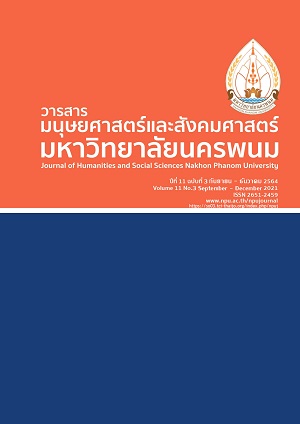The Development of Instructional Model Applied by the Flipped Classroom Model According to the Technology Integration Matrix for Engineering Students
Main Article Content
Abstract
The objective of this research includes 1) to develop the instructional model applied by the flipped classroom model according to the technology integration matrix for engineering students. 2) to study the results of instructional model applied by the flipped classroom model according to the technology integration matrix for engineering students. 3) The study of student satisfaction affects the instructional model applied by the flipped classroom model according to the technology integration matrix for engineering students. The sample group was undergraduate students that study Bachelor of Engineering Program in Electrical Engineering at Rajamangala University of Technology Lanna Chiang Rai. They were enrolled in the Digital Circuits course in the second semester of the academic year 2019, a total of 9 students. The result of this research showed that 1) the results of the development instructional model applied by the flipped classroom model according to the technology integration matrix. It consists of 4 components: First, the input includes targeting, behavioral objectives, content design and activities, tools, media devices, and support. Second, the process includes teaching activities, instructor roles, learner roles. The development of instructional model applied by the flipped classroom model consists of studying outside the classroom using Google Classroom and learning in the classroom makes a lesson plan according to the technology integration matrix. It follows the five interdependent characteristics of meaningful learning environments: Active Learning, Constructive Learning, Goal-Directed Learning, Authentic Learning, and Collaborative Learning. Third, the product includes the ability to use technology to generate results from presentations, the ability to enter information and submit assignments, academic achievement. Finally, the feedback includes the information obtained from the analysis of the relationship between productivity and purpose, which provides feedback to process improvement and feeder relative to that productivity and goal. 2) Learners have an average score on the ability to use technology to create a product from classroom presentations that is significantly higher than the threshold at the level of 0.01 The ability to study information and submit an assignment that is significantly higher than the threshold at the level of 0.01 The academic achievement after learning is significantly higher than before studying at the level of 0.01
Article Details
References
David R. Barbour. (2017). Technology integration matrix and student engagement : a correlational study. Doctor of Education. Graduate Faculty. Northcentral University.
Gerlach, V.S. and Ely, D.P. (1971). Teaching and Media: A Systematic Approach. New Jersey : Prentice-Hall.
Kanittha, B. (2016). kānphatthanā rūpbǣp kān rīan kānsō̜n bǣp hō̜ng rīan klap dān rūam kap kānrīanrū bǣp nam tonʻēng phư̄a songsœ̄m khwāmsāmāt nai kān khit wikhro̜ khō̜ng naksưksā radap parinyā trī [The development of flipped classroom model with self-directed learning to enhance critical thinking in an undergraduate course]. Bangkok: King Mongkut's University of Technology North Bangkok.
Komol. C. (2015). patčhai sāhēt kānʻō̜k klāngkhan khō̜ng naksưksā mahāwitthayālairātchaphatwa lai ʻAlongkō̜n nai phra bō̜rom rāchūpatham [Factors causing the college dropout of Valaya Alongkorn Rajabhat University Under Royal Patronage Sa Kaeo Campus]. Journal of Valaya Alongkorn Pritat. 5 (1).
Office of the Education Council : Ministry of Education. (2018). National Education Act of B.E. 2542 (No.4) B.E.2562. Retrieved August 2020, from http://backoffice.nec.go.th/uploaded2/ Category/202006 /2020 0601ActEDU_01.pdf.
Sutida, J. (2017). kānrīanrū thī būranākān rūam kap theknōlōyī [Technology Integrated Learning]. Bangkok, Charansanitwong Printing Co., Ltd.
Warayuphat. P., et al. (2015). Flipped classroom klap dān kānrīanrū sūha ʻong rīan nai satawat thī yīsipʻet [Flipped Classroom Back to Learning to The 21st Century]. Documents for Academic Seminars. Education Technology Faculty of Education Silpakorn University.
Wichan, P. (2012). withī sāng kānrīanrū phư̄a sit nai satawat thī yīsipʻet [Ways to Build Learning for Disciples in The 21st Century]. Bangkok : S R Printing Mass Product Co., Ltd.
Wichan, P. (2013). khrū phư̄a sit sāngha ʻong rīan klap thāng [Teacher for Pupils Create Flipped Classroom]. Bangkok: S R Printing Mass Product Co.,Ltd.


